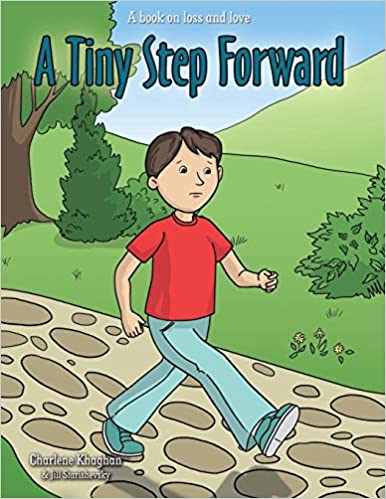In her newly released book, A Tiny Step Forward, author Charlene Khaghan lets young children know that if they have lost someone close, be it friend, pet or family member, it is okay to feel upset and miss the person they are grieving. And, in the days that follow, it is okay to once again feel happy and to enjoy life as their loved one would have wanted for them.
When it comes to explaining grief to a child, this book can help children know they are not alone and normalize what they are experiencing.
Khaghan offers 6 Tips for Helping Children Grieve below.
Acknowledge your child’s grief. It is important to recognize that your child is grieving. Be careful not to impose your own grief on your child, but rather allow him or her to grieve in his or her own way. It is normal for children to feel a variety of feelings, including sadness, anger, and fear. Parents might worry about their children when they go from one feeling to the next, but experts assure parents that children will grieve as much as they need to, as long as they are allowed to do so.
Be honest and explain the loss. It is important to present the news in a straightforward manner with age-appropriate information. Children may have difficulty processing lengthy explanations, but they do need facts. Something as simple as, “Uncle Joe’s heart stopped working yesterday which made his body stop working. Older children will need more specific facts, such as the name of an illness. Remember to stay focused on this one incident and provide frequent reminders that you are ok.
Share Memories. Find ways as a family to remember your loved one. Perhaps it’s something that’s visible on a daily basis, like planting a tree in the back yard or creating a special picture book all about Uncle Joe, or sending off balloons once a year— anything that connects your family to your loved one who has passed.
Write about the Experience. One way to help children move past their grief is to have a parent/ adult write down the experience of hearing the loss so that the child does not have to relive it all of the time. Many times, children (and adults) are afraid/ nervous that if that don’t relive the moment of death, they will forget it. By having something to reflect on, they will always be able to remember the experience and therefore be able to move forward.
Allow Children to Participate: Engaging children in the planning of activities can help them feel connected to what is happening around them. Let them talk about it. Children need to have opportunity to put their feelings into words. They may be anxious about the safety of other loved ones or themselves. Or they may be feeling guilty about times they weren’t nice to the deceased, or sad thinking about opportunities they missed to show affection. They will do better if they can express their feelings to those who can provide the reassurance they need to heal.
Provide Resources: Consider turning to activities that you can do as a family to help with the grieving process. These may include reading children’s books or watching movies. Connecting with characters or hearing another expert’s perspective may help them feel less alone in the experience. During the healing process, they will likely realize that this everyone will go through the loss of either with a pet or a loved one

